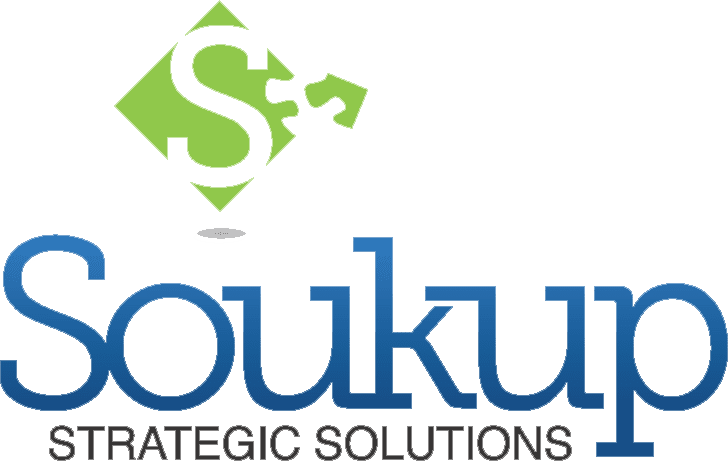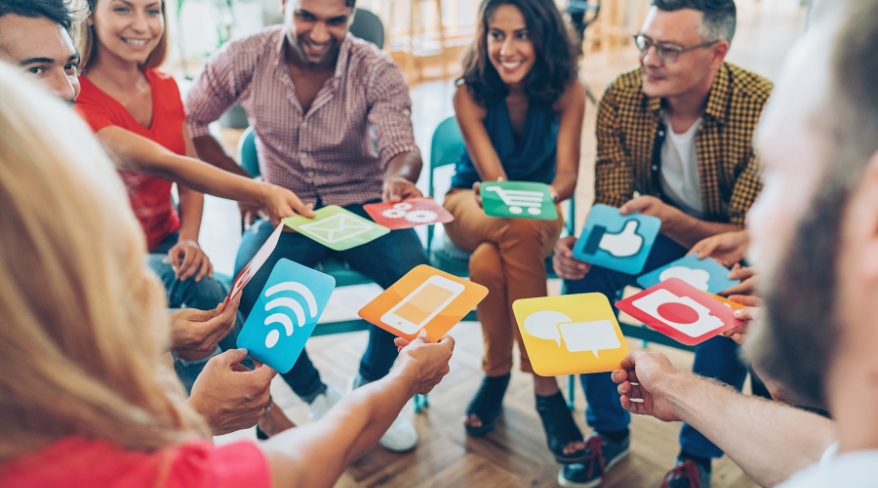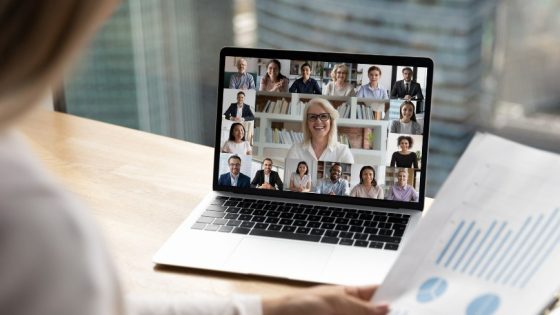Have you ever wished you could personally connect with every donor, supporter, and volunteer exactly where they’re spending their time online? While you can’t physically meet everyone everywhere, your nonprofit’s message can. Omnichannel marketing for nonprofits is the key. It delivers authentic, tailored stories across blogs, social media, press releases, and emails—anywhere your audience connects online.
You likely already have strong core messages and a solid picture of your supporters’ journey. This article builds on that foundation. It explores tools and strategies designed to amplify your content and expand your reach.
Mapping Your Omnichannel Approach: Where and How to Engage
The heart of successful omnichannel marketing lies in delivering cohesive and tailored messages on the platforms your audience frequents. Start by identifying these touchpoints: where are your supporters spending their time online? Are they scrolling through Instagram, networking on LinkedIn, reading blogs or emails, or watching videos on YouTube?
Channel Prioritization Framework
To effectively prioritize your channels, consider evaluating these key performance indicators (KPIs):
- Engagement Rate: Track likes, comments, shares, and click-through rates.
- Audience Growth: Monitor how quickly your follower count grows over time.
- Conversion Metrics: Observe which platforms lead to the most donations, sign-ups, or website visits.
If you’re unsure about audience preferences or behaviors, consider these steps to gain clarity:
- Social Polls: Run polls on your platforms to hear directly from your audience.
- Analytics Review: Use Google Analytics to track where traffic is coming from and which sources drive the most engagement.
- Peer Scanning: Observe what similar organizations are doing and where they’re seeing success. If they’re succeeding on a platform you haven’t tried, it may be worth exploring.
You might discover some surprises. Perhaps your major donors appreciate lighthearted content on Instagram, or younger volunteers are more active on TikTok. Chart out your platforms and consider establishing accounts on those you’ve been contemplating. As you’ll see in the following sections, tools are available to efficiently adapt and schedule your content across various channels, making it worthwhile to experiment and discover new ways to engage and inspire your audience.
The Power of Omnichannel Engagement
Nonprofits that invest in consistent messaging across multiple channels are seeing measurable results. According to TechSoup, omnichannel strategies help nonprofits create a more cohesive supporter experience by ensuring their communications are accessible across devices and platforms.
A study published in Nonprofit Management & Leadership emphasizes that understanding how supporters engage across various touchpoints is crucial for developing effective outreach and fundraising strategies. By implementing a multi-channel approach, organizations are better positioned to build long-term relationships, increase trust, and drive meaningful actions from diverse segments of their audience.
Creating a Unified and Personalized Donor Experience
Omnichannel success isn’t just about putting your message everywhere. It’s about creating a seamless, connected experience for your audience across all platforms. Real-time responsiveness—answering comments and messages quickly—is key to keeping people engaged. When someone interacts, timely responses show you’re present and attentive.
To manage this at scale, consider using centralized platforms like Hootsuite for Nonprofits. These tools allow you to monitor and respond across platforms from one dashboard. CRM tools or integrated social media platforms help personalize messaging based on a supporter’s history with your organization.
With AI features now built into many tools, you can go a step further—automating thank-you messages, adapting language to different segments (donors vs. volunteers), and building smarter, more human-like responses that still sound like you. When used thoughtfully and monitored, these tools can enhance trust and deepen relationships.
Leveraging Your Data: Turning Analytics into Action
Your analytics tell a compelling story. Meta’s Creator Studio and Business Insights offer real-time dashboards that help you understand what’s resonating, and why. They can reveal hot topics your audience cares about, post types and captions that get the most interaction, and follower demographics and behavior patterns you can use to tailor content.
AI-Powered Enhancements
Generative AI tools can take your insights to the next level by helping you:
- Personalize content for specific audience segments.
- Predict trends and preferences based on engagement data.
- Automatically optimize language, length, or style for different channels.
- Generate tailored messaging across multiple platforms at once.
To dig deeper, you can download your raw data from social platforms, for example:
- Facebook: Go to Settings → Your Facebook Information → Download Your Information.
- Instagram: Go to Your Activity → Download Your Information. (make sure to select all posts, followers, and engagement data).
Once you have your data, you’re ready to plug it into AI tools and start building smarter content based on real-world performance.
Smart Content Creation and Repurposing: Maximize Your Assets
Your nonprofit likely has more content than you realize—impact reports, website copy, blog posts, grant applications, emails, case studies, event summaries, and even social media captions. What you may see as “done” content can be the backbone of your marketing strategy.
Imagine you have an annual report feature about a program participant’s transformation. With a little help from generative AI, you could:
- Turn that narrative into a blog post and press release highlighting impact.
- Incorporate it into a donor email campaign as a thank you or solicitation.
- Create a reel, graphic, or carousel for Instagram, Facebook and Tik Tok.
- Expand on the story for a LinkedIn article appealing to donors and sponsors.
- Repackage the full narrative into a script for a testimonial video.
Using Generative AI Tools in your Omnichannel Content Creation Strategy
To make the most of your existing materials, use AI tools like ChatGPT or Claude in a step-by-step process:
- Step 1: Upload Materials
Start by uploading one content asset at a time—an annual report, website content, newsletter, grant narrative, or exported social data. - Step 2: Analyze and Summarize
Ask the AI to fully read each document and provide a detailed summary, summarize key takeaways, and outline suggestions for which parts could be broken out for repurposing. - Step 3: Create Blog Posts & Longform Content
Based on those insights, generate several article topics using AI, then transform them into blogs, newsletter features, LinkedIn articles, or a press release. - Step 4: Draft Platform-Specific Social Posts
From each long article, ask the AI to create several short-form social posts based on your channels such as Instagram captions, LinkedIn posts, and an engaging intro for a reel or video. - Step 5: Review, Refine, and Personalize
Adjust the tone and edit for clarity—this is where you ensure the content accurately reflects your organization and brand voice. You should provide the AI tool feedback and refine the content together, or upload your final draft back to the AI tool, to help it improve future content creation. - Step 6: Optional – Generate a Content Calendar
Ask the AI to organize all of the above into a monthly or quarterly calendar, including platforms, dates, and types of content. You may need to give guidance on event and campaign dates to ensure it aligns with your calendar.
Repurposing content this way helps you stretch your resources, maintain message consistency, and keep your audience engaged without constantly creating from scratch. With each round of feedback, your AI assistant gets more aligned with your voice and goals, making this not just a one-time tactic, but a system for sustainable content creation.
Planning and Scheduling for Maximum Impact
Once your content is drafted, you’ll need a clear plan for when and where to publish it and the right technology to get the job done. Ideally, you want to post on all your social channels several times per week and update your website content weekly (adding blogs or updating page content). For major campaigns (like Giving Tuesday or your spring fundraiser), plan posts at least 4 – 6 weeks in advance. This can be a lot to manage, and keeping content calendars and plans in isolated documents can create unnecessary manual tasks that can be streamlined with the right tools.
Social scheduling tools like Hootsuite can help you:
- Build and visualize your content calendar in real time while preparing your scheduled posts.
- Adapt posts to each platform (e.g., shorten for X, reformat for Instagram, change tone for LinkedIn).
- View all social platform analytics in one dashboard, enabling real-time responses and engagement with your audience.
Canva, an AI assisted design tool, integrates directly with Hootsuite so you can access, edit, and schedule branded graphics without switching platforms. Keep in mind social media posts don’t always require design—some of your best posts will simply be a great photo and a meaningful story.
Maximize Your Online Presence: Omnichannel Marketing for Nonprofits
Implementing an omnichannel marketing for nonprofits strategy may seem overwhelming. However, with the creative use of generative AI and software tools, it’s completely achievable. By combining thoughtful messaging, strategic scheduling, and real-time engagement, you’re not just marketing. You’re building trust and community at every touchpoint.
If you’re ready to take your nonprofit marketing efforts to the next level, whether through strategic guidance or hands-on support, our team is here to help. Contact us today to start building stronger, more meaningful connections with your audience.






